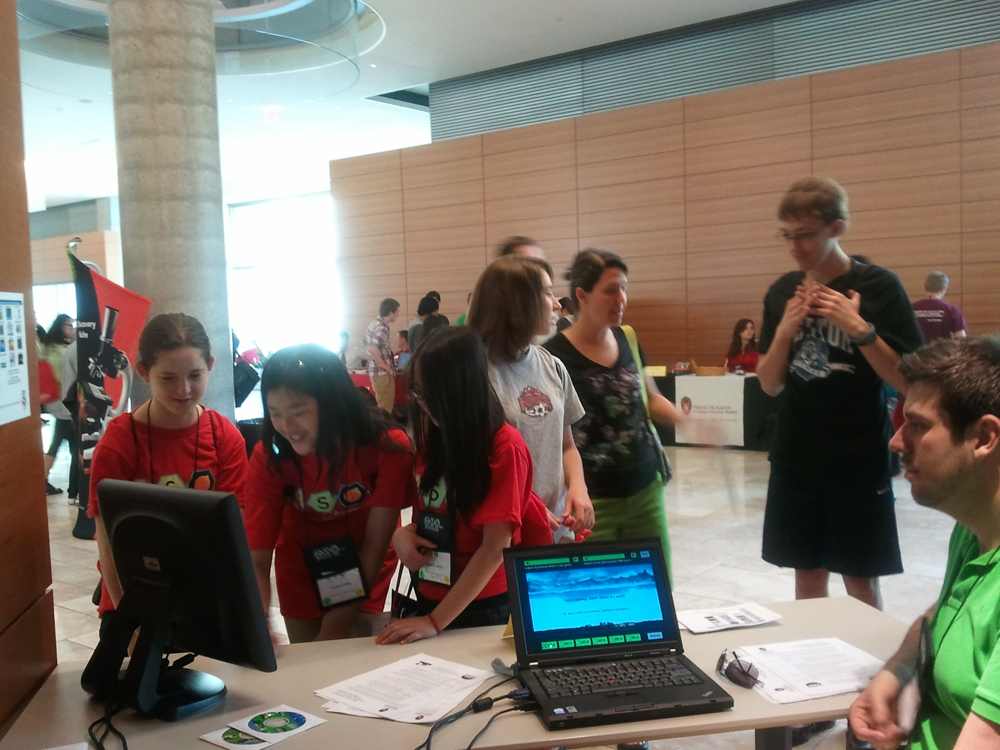
[ Archive ]

 |
ASPB and CIMSS Weekly Report
[ Archive ] |
 |
IN THE PRESS:
Space News Article on GOES-R: Tim Schmit and others were interviewed by Space News. The topic was the next generation Geostationary Operational Environmental Satellite (GOES)-R and potential benefits, especially those associated with severe weather. The article is available at http://www.spacenews.com/earth_observation/110516-weather-sats-saw-tornado-swarm.html. (T. Schmit, E/RA2, 608-263-0291, tim.j.schmit@noaa.gov)
ITEMS FOR THE ADMINISTRATOR:
ITEMS FOR THE ASSISTANT ADMINISTRATOR:
SWIPA Assessment of Arctic Cryosphere Released: Excerpts
of a US State Department press release, May 12, 2011: "Secretary of
State Hilary Rodham Clinton joined her counterparts at the May 12, 2011
Arctic Council Ministerial Meeting in Nuuk, Greenland, in welcoming the
release of a major climate science report on the state of the frozen
Arctic. The Arctic Monitoring and Assessment Programme (AMAP), a working
group of the Arctic Council, released an assessment report on the
impacts of climate change on Snow, Water, Ice, and Permafrost in the
Arctic (SWIPA). The report represents the culmination of a multi-year
study that included contributions from scientists and indigenous groups
from all of the Arctic States and additional expertise from non-Arctic
communities as well...The Arctic Council will publish the full
scientific assessment and an executive summary for policymakers, which
captures the key scientific findings, found within the full report. The
executive summary for policymakers is available at the Arctic Monitoring
and Assessment Program's website: http://amap.no/swipa/. The United
States urges forward looking cooperation among the Arctic countries to
respond to the SWIPA Assessment's findings and recommendations." The
full press release is available at
http://www.state.gov/r/pa/prs/ps/2011/05/163288.htm. Jeff Key (STAR) is a
member of the SWIPA Integration Team and a lead/co-lead author on three SWIPA
chapters. (J. Key, E/RA2, 608-263-2605,
jkey@ssec.wisc.edu)
Significance: SWIPA is a major assessent of recent changes in the Arctic
cryosphere. Two NOAA scientists (NESDIS and OAR) made significant contributions to the
report, and NOAA satellite data played a important role in the science
presented.
NOAA Mission Goal: Understand Climate Variability and Change to Enhance Society's Ability to Plan and Respond NOAA Cross-
Cutting Priorities: Sound, Reliable State-of-the-Art Research; Integrating Global Environmental Observations and Data Management
ITEMS FOR THE OFFICE DIRECTOR, STAR:
ITEMS FOR THE DIVISION CHIEF, CoRP:
MODIS Science Team Meeting: Andrew Heidinger attended a meeting of the Science Team for NASA's Moderate Resolution Imaging Spectroradiometer (MODIS) held at the University of Maryland. He gave a presentation on a new method to estimate cirrus cloud properties from the MODIS Infrared (IR) observations. The IR properties are much closer in agreement with those from a space-borne lidar and may offer insight into the cause for the large differences between the lidar values and those derived from MODIS with a solar-reflectance based technique. The current lack of spectral consistency between IR and solar-based methods limits advances in cloud remote sensing. (A. Heidinger, E/RA2, 608-263-6757, andrew.heidinger@noaa.gov) (Click image to enlarge)
(Click image to enlarge)NEXT WEEK:
LOOKING AHEAD:
| Archived Weeklies Page | Submit a report item |